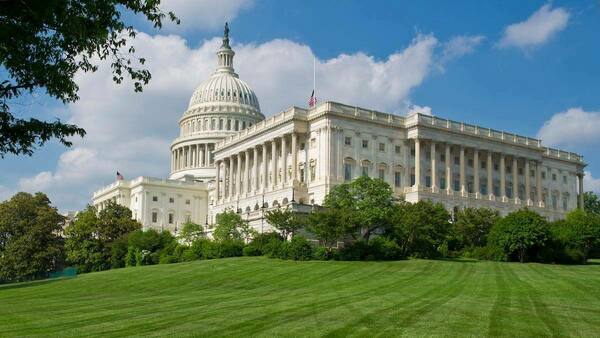Solar eclipse-focused events lead up to watch party on April 8
Plan on rocking some eclipse glasses on the afternoon of April 8 (Monday) as Notre Dame and the surrounding community experience an almost total solar eclipse.
The College of Science at the University of Notre Dame has public lectures and eclipse-themed planetarium shows planned both on and off campus in the weeks and days leading up to the eclipse. An eclipse watch party is scheduled on April 8. Each event is free and open to the public.
“We’re excited to bring everyone together to learn about eclipses, and then enjoy the event together,” said Keith Davis, director of the Digital Visualization Theater at Notre Dame. “The next total solar eclipses in North America won’t happen until 2044 and 2045, so this will be a rare opportunity for many of us.”
More details about each event can be found on the College of Science website for the following:
-
Planetarium show, “Get Ready for the April 8 Solar Eclipse!” 6:30 p.m. Tuesday (Feb. 13) in the Digital Visualization Theater, Room 100, Jordan Hall of Science.
-
Discussion of historical solar eclipses at 6:30 p.m. March 19 (Tuesday), Room 105, Jordan Hall of Science.
-
Lecture, “What if the Sun Doesn’t Come Back?” Talk begins at 6:30 p.m. March 27 (Wednesday) at the St. Joseph County Public Library Main Branch Auditorium, 304 S. Main St., South Bend.
-
Lecture, “Eclipses in Outer Space: How Astrophysicists Use Eclipses of other Stars to Find New Planets.” Talk begins at 6:30 p.m. April 2 (Tuesday) at the St. Joseph Public Library Main Branch Auditorium.
-
Planetarium show, “Into the Shadow.” 6 and 7:30 p.m. April 4 (Thursday) and 7 p.m. April 5 (Friday), Room 100, Jordan Hall of Science.
-
Eclipse watch party on the Irish Green from 1 to 4:30 p.m. April 8. The entire eclipse event in South Bend will begin at 1:53 p.m., reach 97 percent totality at 3:09 p.m. and end at 4:08 p.m.
At each event, attendees will have the opportunity to pick up some eclipse glasses, which are crucial for viewing the eclipse. Davis emphasized that people should never look at the sun directly, not even during a partial eclipse event, or they can permanently damage their eyesight.
During a total solar eclipse, the moon passes directly between the Earth and the sun, casting the darkest parts of its shadow on regions of the Earth. This completely blocks the face of the sun from those regions. Although the moon is between the sun and Earth during every new moon, it’s usually not perfectly aligned, so its shadow doesn’t usually land on the Earth.
During this year’s eclipse, the moon will block the sun in certain areas from Mexico to Maine, and the sky will darken as if it were dawn or dusk. Indiana will experience totality, or 100 percent blockage of the sun, in an approximately 115-mile-wide stretch diagonally from Evansville to just south of Fort Wayne.
Originally published by at science.nd.edu on Feb. 1.
Latest Colleges & Schools
- ‘Prebunking’ false election claims may boost trust in electionsIn recent years, democracies worldwide have seen a growing erosion of trust in election outcomes and institutions, driven in part by fears of widespread fraud. New Notre Dame research finds that “prebunking” — providing accurate information before false claims spread — boosts trust in elections more effectively than traditional fact-checking.
- Justice Amy Coney Barrett to deliver Center for Citizenship and Constitutional Government lectureAmy Coney Barrett, associate justice of the Supreme Court of the United States, will speak at the University of Notre Dame at 4 p.m. Sept. 12 in the Leighton Concert Hall of the DeBartolo Performing Arts Center.
- Three Notre Dame researchers win NEH grants for humanities-based projectsDavid Hernandez, the Eli J. and Helen Shaheen Associate Professor of Classics, and Morgan Munsen, senior research and partnerships program manager at the Nanovic Institute for European Studies in the Keough School of Global Affairs, have each won an NEH Collaborative Research grant. Thomas A. Stapleford, associate professor in the Program of Liberal Studies, is leading a team that has been awarded a Humanities Research Center on Artificial Intelligence grant.
- Open-access database offers insights into U.S. congressional candidatesEach election cycle, thousands of candidates vie for seats in the U.S. House of Representatives and the Senate. Until now, there has been no comprehensive, publicly available resource cataloging what those candidates say about who they are or what they stand for. A new open-access database called CampaignView, created by researchers at the University of Notre Dame, offers researchers, journalists and educators a powerful tool to understand congressional elections.
- First impressions count: How babies are talked about during ultrasounds impacts parent perceptions, caregiving relationshipPsychologist Kaylin Hill studied the impact of a parent’s first impression of their baby during an ultrasound exam. The words used by the medical professional to describe the baby (positive or negative) influence how the parents perceive their baby, relate to them after they're born and even how that child behaves as a toddler. The research has broad implications for how we train medical professionals to interact with expectant parents, as well as how we care for parents during the perinatal period when they are most susceptible to depression.
- Prioritizing prenatal care may decrease low birth weight outcomes in The Gambia, Notre Dame research findsA new study co-authored by University of Notre Dame researchers highlights the importance of prenatal care for improving the health of mothers and newborns, providing evidence that can inform policy.













